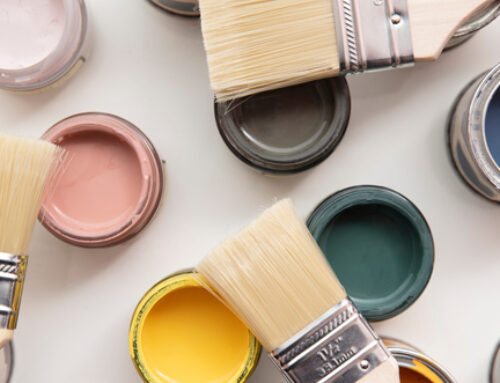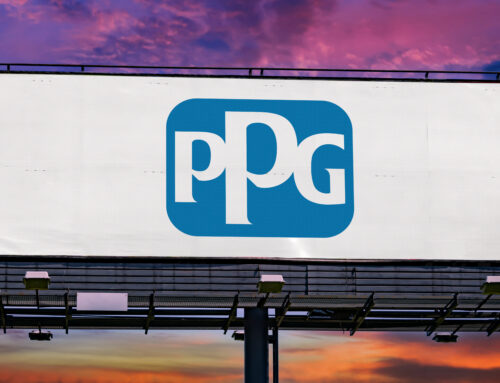Paramus, New Jersey, dubbed the “Retail Capital of the World,” boasts five malls and generates more retail sales than any other zip code in the country, according to The Goldstein Group. Benefiting from the town’s robust retail environment, Nortons Paint in Paramus has become a staple for residents seeking painting supplies, including abrasives and sanding products. The store dedicates an entire aisle to sanding products and abrasives, offering everything from sandpaper and sponges to sanding discs and palm sanders.
One of the recent biggest sellers for the store has been powered sanders, many of which include dust-collection systems that make the job site cleanup easier.
“Having multiple dustless options is great for our contractors because they’re going into people’s homes and don’t want to make a mess while they work,” says manager Erik Boettcher. “I’ve heard horror stories of homeowners still finding dust weeks after a contractor has finished a job, so we make sure we have dustless options.”
In addition to powered sanders, Nortons Paint stocks a diverse range of sandpaper grits, catering to customers’ varying finishing needs. Boettcher underscores the significance of effectively communicating product options to customers and ensuring a comprehensive selection to meet diverse preferences. The store sells everything from 1,000-grit sandpaper down to 36-grit sandpaper.
“Having a wide range of sandpaper types allows us to serve all the different types of finishes our customers are trying to achieve,” Boettcher says.
However, having variety in this category doesn’t serve an operation well if the employees are not properly educating customers on the nuances of abrasives, Boettcher says.
“It’s all about listening to the customer and learning what kind of job they’re doing,” he says. “If what they want to buy doesn’t work out, we’re able to offer them alternatives. If we don’t have what they need, we’re able to order it for them. We’re always looking at new products, but also keep the core selection that customers come back to.”
To further engage customers and empower employees, Nortons Paint hosts three to four demo days per year in collaboration with The Wooster Brush Co., Festool and Benjamin Moore.
These events allow customers to experience products firsthand while enjoying refreshments. Boettcher emphasizes the value of hands-on interaction with tools, both for customers and staff, to convey expertise and build trust in the company.
About the Retailer
Growing up in Paramus, New Jersey, Erik Boettcher would accompany his grandfather to Nortons Paint store years before he ever considered a career in the
hardware industry. After spending many years in the corporate world, Boettcher sought a change of pace and began working at a different paint store. Over 14 years ago, he joined the Nortons Paint team and now serves as the manager. Now, Boettcher no longer endures the hour-long commute each day, and he finds satisfaction in helping to shape the store that holds cherished memories from his childhood.
“We host multiple demo days every year,” Boettcher says. “We try to make it appealing to everybody from a DIYer coming in to contractors. These demo days are a great chance for customers to get their hands on a product and see it used by professionals and also use it themselves.”
Boettcher says the demo days began as a way to enhance the shopping experience for their customers and show how the right accessories can make or break a job.
“You can have the best sander in the world, but if you don’t have the right abrasive that matches up to it, your customer is going to have a bad experience,” he says.
In preparation for the demo day, Boettcher makes sure he has ample stock of the items needed for the demonstrations. He checks with his vendor partners on what tools they’ll bring.
Boettcher says you have to become familiar with a product if you’re going to sell it. He tries to get his staff to interact with the tools each day.
“You can know everything about a product. You can read the entire manual and look at it all you want, but until you get your hands on a product and have a personal experience, you won’t have the proper knowledge on a product,” Boettcher says. “Having experience with a product conveys to the customers that
you’re selling them something you’re knowledgeable about.”
Boettcher combines the demo days with product sales as well, and has seen an increase in specific products sold as a result of the demo days.
Outside of demo events, Nortons Paint provides opportunities for customers to test products.
“I have multiple sanders and vacuums ready to use in the store, so if a customer wants to test one out, we can get with them right away for that in-store demo,” Boettcher says.
Boettcher stresses to his employees the importance of treating every customer with respect. All the training he offers ensures a better sales experience, regardless of the
employee’s background or expertise. A lot of his training comes through time in the store interacting with customers.
He encourages his employees to take products they have and use them in-store and at home so they can give their honest opinions to customers.
“Whether it’s a contractor or a homeowner, if you say that you have experience with a product and it will help them complete their job, more often than not, they’re going to buy that product,” Boettcher says. “The whole sale has to be a trustworthy experience.”
All About Abrasives
As a consumable item, merchandising a variety of grits, backings, materials and shapes of abrasives, in addition to having the right knowledge, can create loyal customers who consistently visit your business for all of their sanding and abrasive needs. Helping customers choose the correct grit for the project is also integral to being successful in this category.
- Coarse: Gril 60-80
This is often used to remove old paint and smooth rough edges. It is best for removing large amounts of wood and rounding off corners and should not be used for fine details or to keep edges sharp. - Medium: Grit 100-150
Best for general purpose sanding, users should change the pressure level applied to achieve different tasks. - Fine: Grit 180-220
This is used to roughen surfaces for painting or as a first pass-through for later sanding with ultra-fine grits. - Ultra-Fine: Grit 320
Able to achieve the highest level of smoothness, this is often used to smooth painted surfaces between coats.







